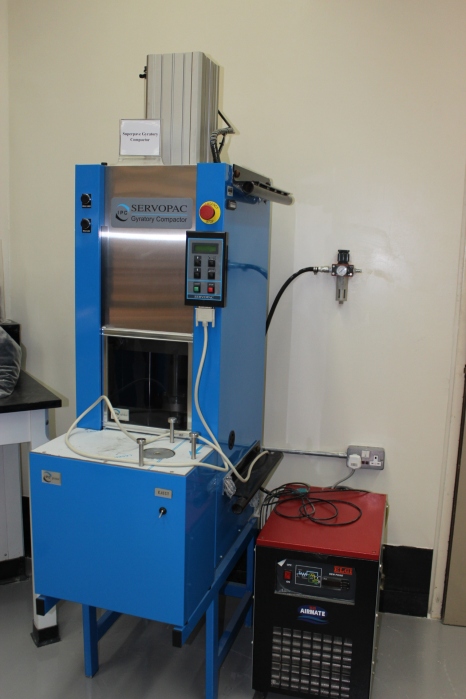Superpave (Superior Performing Asphalt Pavement) utilizes performance based asphalt binder selection, gyratory compaction testing lab analysis, and volumetric mix design analysis to create a superior pavement. It was devoloped in the 1990’s as a replacement to the Marshall and HVeem asphalt mix design methods. Superpave asphalt takes into account traffic, loading, environmental conditions, advanced binder selection methods, advanced aggregate selection methods, and advanced methods of overall mix design analysis. As far as asphalt binder utilization, Superpave classifies selection and use based upon performance grade binders (PG) which are expected to be resistant to ruts and cracking within the confines of their temperature range specifications. What makes a binder ‘performance grade’ is the makeup and the quality of the crude oil and also the performance temperature differential which is explained below:
For example a PG 70-22 asphalt binder will be resistant to cracking and rutting when the pavement temperature is between -22 and 70 degrees fahrenheit. Engineers will typically take an average 7 day max and expected minimum pavement temperature in a certain project area from the Superpave Weather Database and choose the PG grade max and min temperatures based on this weather data. Each jurisdiction and engineer are different, but in general a lower temperature fluctuating PG grade will require standard crude oil, an intermediate temperature fluctuation may require high quality crude oil, and a considerable temperature fluctuation may require a modified polymer asphalt binder to achieve the performance grade desired. Climate is typically the primary factor in choosing a performance grade binder but other factors can be strong influences as well such as types of traffic, traffic speed, traffic loading, RAP usage, cost implications, owners’ desired reliability, etc.

Along with binder content; aggregate properties and gradation are taken into consideration while being compared to expected traffic loads, lift thicknesses, and other environmental factors to create the optimum aggregate structure. Gyratory compaction lab analysis, which is specific to Superpave asphalt, has been shown to more accurately reflect field compaction. Once the lab compaction specification is produced, the volumetric properties of the mixture are calculated, and the data is analyzed to determine which aggregate blend will be most suitable for the specific paving project.
Superpave asphalt requires requires a more advanced mix design procedure that specifies the testing, mixture ingredients, and technological tools needed for a smoother, longer lasting, more project-specific asphalt pavement.